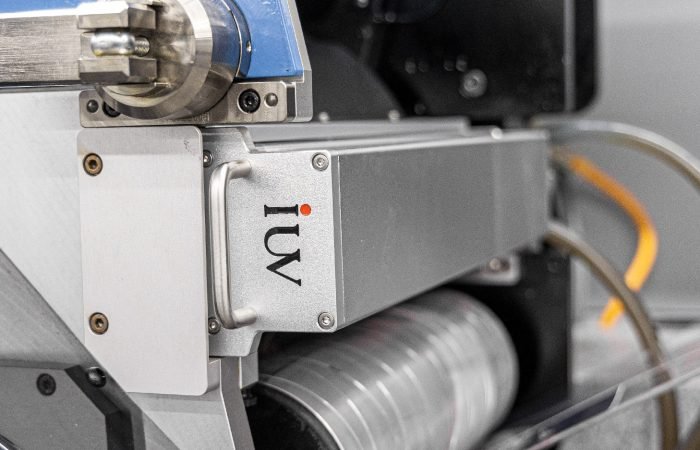In the fast-paced world of label manufacturing, every second counts. Production floors hum with flexographic and narrow web presses racing to meet deadlines, while quality controllers scrutinize color consistency under bright lights. At the heart of this controlled chaos lies a silent game-changer: UV LED curing systems. These unassuming units don’t just dry ink – they redefine what’s possible in modern label production.
Traditional mercury arc lamps once dominated curing processes, but their limitations became glaring as press speeds increased. Operators grew tired of warm-up delays consuming 15-30 minutes daily. Maintenance crews dreaded replacing mercury bulbs every 1,000 hours. The heat generated by conventional systems caused unscheduled downtime as thin label substrates warped under thermal stress. Enter UV LED technology – a solution that turned these pain points into historical footnotes.
Modern UV LED systems activate instantly, eliminating ramp-up time. Press operators now launch jobs immediately after powering on equipment. The cold cure process prevents heat-related substrate distortion, enabling printers to handle delicate materials from wine labels to medical stickers without compromise. With operational lifespans exceeding 20,000 hours, these units slash maintenance frequency by 95% compared to legacy systems.
The magic happens through precise wavelength targeting. Unlike broad-spectrum mercury lamps wasting energy on irrelevant wavelengths, UV LED systems emit narrow-band radiation tuned to photoinitiators in contemporary inks. This focused energy delivery achieves full curing at speeds exceeding 200 meters per minute. Printers report 40% faster job completion times without sacrificing adhesion or scratch resistance.
Flexographic printers particularly benefit from this technology. The instant on/off capability allows precise curing control for intricate designs. One converter specializing in holographic security labels achieved 98% first-pass yield after switching to LED curing, compared to their previous 82% with conventional systems. The cold cure process preserved delicate foil layers that previously degraded under heat-intensive methods.
Offset printers navigating the label sector discover new possibilities with UV LED. Waterless offset presses paired with LED curing units now produce premium cosmetic labels with metallic effects previously achievable only through screen printing. The combination delivers offset’s renowned color fidelity with the durability of fully cured UV coatings – all at web speeds that make short-run premium labels economically viable.
Narrow web converters face constant pressure to handle diverse jobs without slowing down. UV LED’s adaptability shines here. One Midwest converter retrofitted their 10-inch web press with dual LED lamps, enabling simultaneous curing of inks and coatings in a single pass. This configuration reduced their energy consumption by 60% while doubling throughput for pressure-sensitive label jobs.
Sustainability metrics reveal another layer of advantage. UV LED systems consume 70-80% less energy than mercury-based units. The elimination of ozone generation and mercury disposal needs aligns with tightening environmental regulations. A European label manufacturer quantified their annual savings: 12 tons of CO2 reduction and €28,000 saved in waste management costs after transitioning their entire fleet.
Ink chemistry evolves in tandem with curing innovations. Major ink manufacturers now offer LED-specific formulations with enhanced pigment loading and lower viscosity. These advancements enable finer halftones and smoother gradients – critical for labels competing at retail point-of-sale. Printers using hybrid UV/LED systems report 30% broader color gamuts compared to conventional UV curing.
The operational economics make a compelling case. While initial investment costs run 20-30% higher than traditional systems, the ROI timeline often surprises skeptics. Reduced energy bills, near-zero maintenance costs, and increased production capacity typically recover the premium within 18-24 months. One label converter documented a 214% productivity increase per square foot of factory space after retrofitting with UV LED technology.
As label applications diversify from food packaging to smart labels with embedded electronics, curing systems face new challenges. UV LED technology rises to meet these demands. Recent trials with conductive silver inks for RFID tags showed superior results under LED curing compared to thermal methods. The precise energy control prevents overheating sensitive components while ensuring proper ink adhesion to polyester substrates.
The future of label manufacturing shines bright – and it’s not just from the UV lamps. As press speeds continue climbing and substrate variety expands, curing systems must keep pace without compromising quality. The industry’s shift toward UV LED technology isn’t just an upgrade – it’s a fundamental reimagining of how labels transition from raw materials to finished products. For converters seeking to lead rather than follow, the path forward glows with diode-driven potential.












